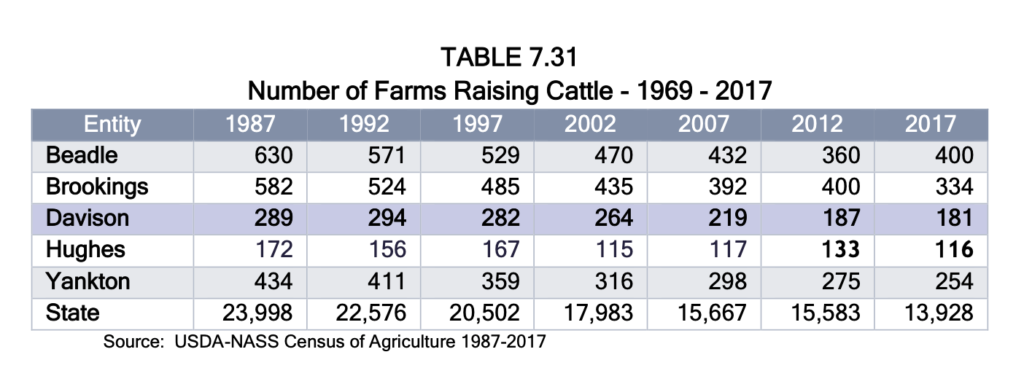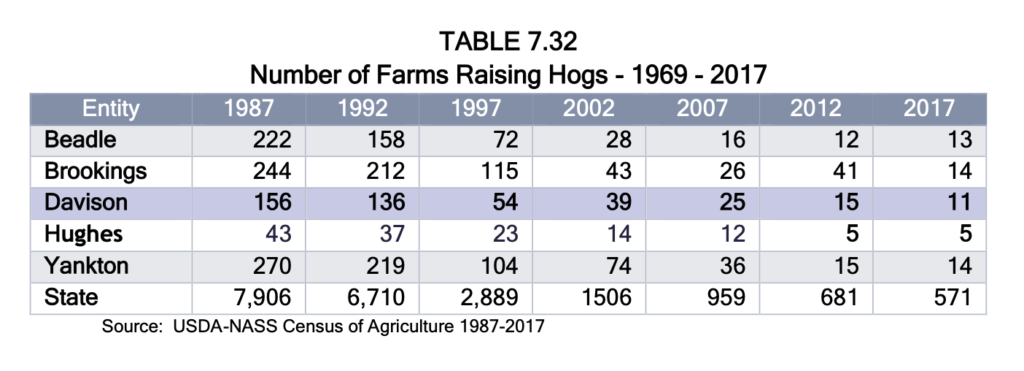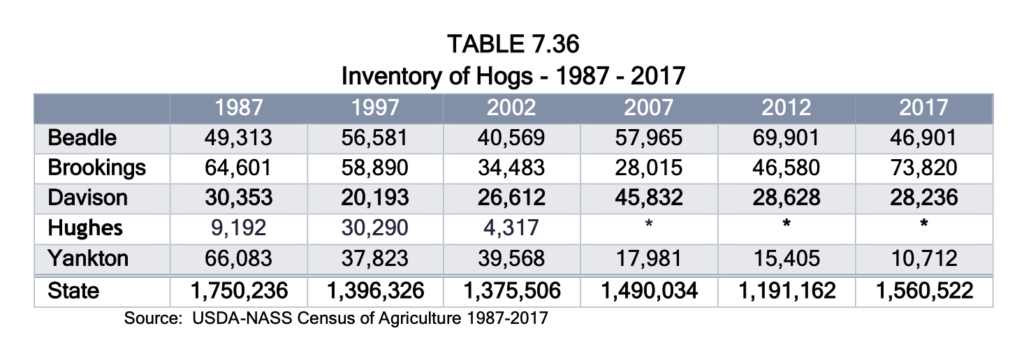Agricultural data from the new Davison County comprehensive plan show the concentration of livestock in fewer big operations in South Dakota.
According to the plan’s presentation of USDA-NASS Census of Agriculture data, the number of farms raising cattle in South Dakota declined 42% from 1987 to 2017, while the number of farms raising hogs dropped 93%.


While thousands of livestock operations have folded, livestock inventories have not shrunk in the same proportion. From 1987 to 2017, the cattle inventory increased 9.9%. The hog inventory declined over most of that period but rebounded remarkably in 2017, producing a net 30-year decline of 10.8%.


According to those figures, the number of cattle per South Dakota farm nearly doubled, while the number of hogs per operation increased 15-fold (quindecupled!):

There may be fewer hogs, but when you pack them together, the smell and environmental impact are more intense. Spreading those critters out isn’t just a California mandate; it’s sensible waste management and conservation. But that’s the opposite of South Dakota’s state-subsidized approach to industrial livestock development, which concentrates not just critters and poop but wealth in the hands of a chosen few.
“Packing” the hoofed critters together also increases the need to inject the food supply with more antibiotics. People are demanding purer food.
The nation’s cattle herd is at the same level it was in 1980 – while the nation’s human population almost doubled. Ranching, feed, feedlots, and slaughter houses are not a growth industry. They are going the way of the horse and buggy.
South Dakotans are unimaginative fools thinking that there is any growth left in the beef, dairy, or pork industries. A second pork slaughterhouse in Sioux Falls will be temple to stupidity.
There is a movement that has been somewhat successful to raise ad market “grass fed beef” with limited antibiotics and vaccines. That option is available in most Supermarkets. Consumer choice may reform the market.